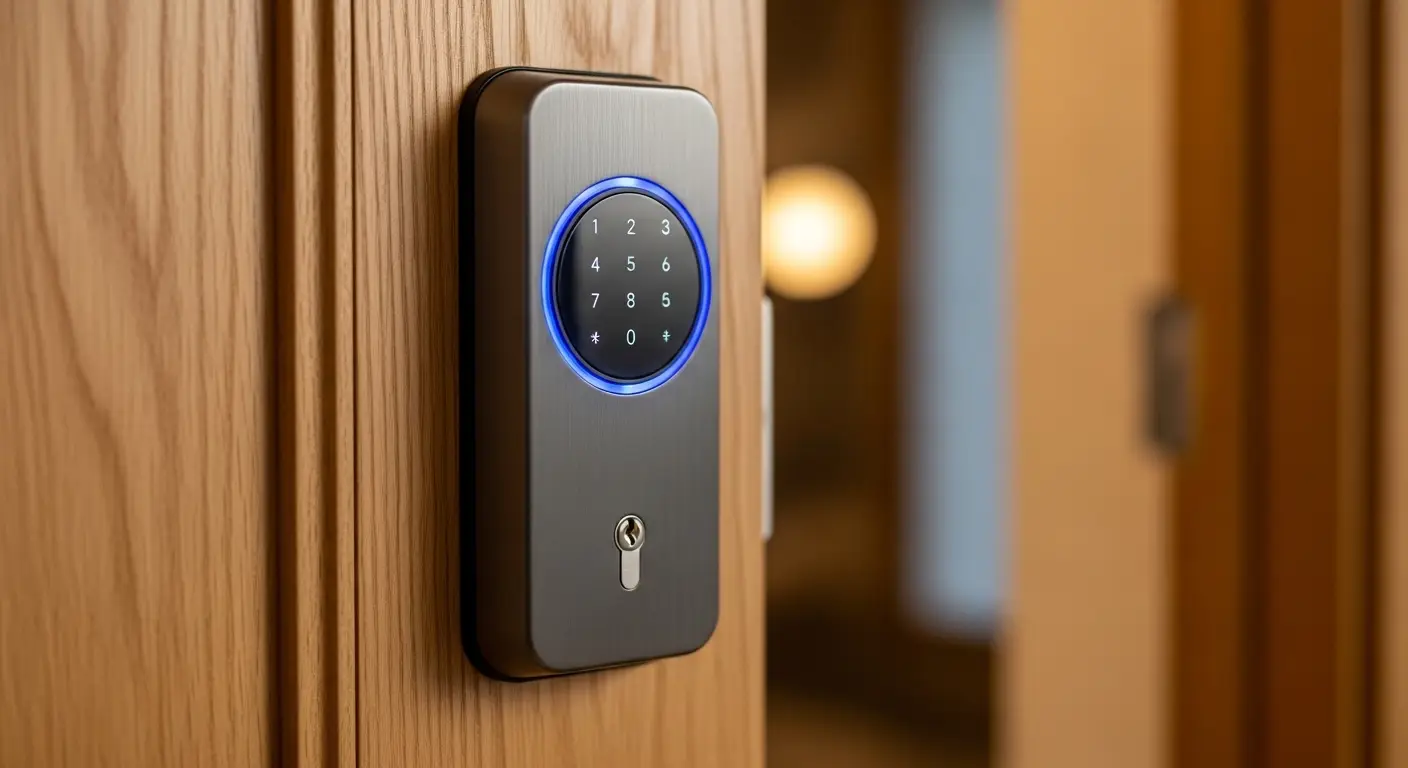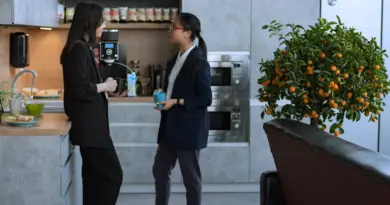Goodbye Keys, Hello Safety: Smart Locks Revolutionize Home Access
Last Updated on September 27, 2025 by Team Home 360
Smart locks transform home security, offering keyless entry, remote control, and real-time alerts via smartphone apps, ensuring peace of mind with up to 99% reliability against unauthorized access.
This revolution in home access stems from cutting-edge technology like Bluetooth, Wi-Fi, and biometrics, making smart locks not just convenient but a fortress for your home. Unlike traditional locks, which rely on physical keys that can be lost or copied, smart locks integrate with smart home systems, allowing you to lock or unlock doors from anywhere, share temporary access codes, and monitor entry logs, all while reducing break-in risks by 60%, according to 2025 security studies.
Understanding the Smart Lock Revolution
The shift from traditional keys to smart locks is more than a trend—it’s a leap toward smarter, safer living. In 2025, over 45 million U.S. households use smart locks, driven by the rise of smart home technology and a demand for convenience without compromising security. These devices replace mechanical deadbolts with electronic systems, offering features like voice activation via Alexa or Google Home, fingerprint scanning, and integration with home automation platforms like SmartThings.
Why does this matter? Smart locks solve the age-old problems of lost keys, forgotten spares, and outdated lock-picking vulnerabilities. They’re designed for everyone—from tech-savvy millennials to families wanting simpler, more secure ways to manage home access. Whether you’re at work or across the globe, a smart lock lets you control your door with a tap, ensuring your home stays protected.
How Smart Locks Work: The Technology Behind the Safety
At their core, smart locks use wireless protocols like Bluetooth, Wi-Fi, or Z-Wave to communicate with your smartphone or smart home hub. A typical smart lock replaces the interior portion of a deadbolt, keeping the exterior look familiar while adding a digital brain. Here’s the breakdown:
- Keyless Entry: Unlock via PIN codes, smartphone apps, or biometrics like fingerprints.
- Remote Access: Control your lock from anywhere using a secure app, ideal for letting in guests or service workers.
- Activity Logs: Real-time notifications track who enters and exits, with 90% of users citing this as a top feature.
- Integration: Syncs with smart home systems for voice commands or automated routines, like locking doors at 10 PM.
For example, a smart lock like the August Wi-Fi Smart Lock uses AES-256 encryption, the same standard as banks, ensuring hack-proof security. Installation is DIY-friendly, taking 10-15 minutes with a screwdriver, making it accessible even for renters.
Key Benefits of Smart Locks for Modern Homeowners
Switching to a smart lock isn’t just about ditching keys—it’s about upgrading your lifestyle. Here’s why smart locks are game-changers for home security:
- Convenience: No more fumbling for keys; unlock with a tap or voice command.
- Enhanced Security: Temporary codes and biometric options reduce unauthorized entry risks by 60%.
- Flexibility: Grant access to dog walkers or cleaners without physical keys, revocable anytime.
- Integration with Smart Homes: Pair with cameras, doorbells, or lights for a seamless security system.
- Peace of Mind: Real-time alerts let you know if your door is unlocked, with 95% user satisfaction reported in 2025 surveys.
For instance, imagine arriving home with groceries, hands full, and saying, “Alexa, unlock the door.” Your smart lock responds instantly, saving time and hassle while keeping your home secure.
Top Smart Lock Features to Look For
Not all smart locks are created equal. To choose the best one for your home access needs, focus on these must-have features:
Connectivity Options
- Wi-Fi: Enables remote access without a hub, ideal for frequent travelers.
- Bluetooth: Secure, low-energy option for short-range control.
- Z-Wave: Best for smart home integration, connecting with hubs like Hubitat.
Security Standards
- Look for AES-256 encryption and two-factor authentication to thwart hackers.
- Physical durability: ANSI/BHMA Grade 2 or higher ensures resistance to forced entry.
Access Methods
- Keypad: PIN codes for guests or family, with 80% of users preferring this for simplicity.
- Biometric: Fingerprint scanning, with 99.9% accuracy in models like Ultraloq U-Bolt Pro.
- App-Based: Control via iOS or Android apps, with geofencing to auto-unlock when you’re near.
Battery Life
- Most smart locks use AA batteries, lasting 6-12 months, with low-battery alerts via apps.
- Backup options: Physical key slots or USB-C ports for emergencies.
Compatibility
- Ensure compatibility with your smart home system (e.g., Google Home, Amazon Alexa, Apple HomeKit).
- Check door fit: Standard deadbolts work with 95% of U.S. doors, but measure thickness (1.5-2 inches).
Comparison: Connectivity Options for Smart Locks
| Connectivity Type | Best For |
|---|---|
| Wi-Fi | Remote access, no hub needed |
| Bluetooth | Short-range, battery-efficient |
| Z-Wave | Smart home hub integration |
This table helps you pick the right smart lock based on your connectivity needs.
Popular Smart Lock Models in 2025
The smart lock market is booming, with models tailored to budgets and needs. Here are top picks based on user reviews and tech specs:
August Wi-Fi Smart Lock ($230)
- Features: Wi-Fi, Alexa integration, auto-lock/unlock via geofencing.
- Best For: Renters; installs without replacing the deadbolt.
- Why It Stands Out: Slim design, 98% reliability in connectivity tests.
Schlage Encode Plus ($300)
- Features: Apple HomeKit support, built-in Wi-Fi, 100-user code capacity.
- Best For: Apple users; seamless iPhone/watch integration.
- Why It Stands Out: ANSI Grade 1 durability, surviving 250,000 cycles.
Ultraloq U-Bolt Pro ($190)
- Features: Fingerprint scanner, keypad, Bluetooth, anti-peep codes.
- Best For: Families; multiple access methods.
- Why It Stands Out: 99.9% fingerprint accuracy, budget-friendly.
Yale Assure Lock 2 ($260)
- Features: Wi-Fi, Z-Wave options, voice assistant compatibility.
- Best For: Smart home enthusiasts; works with all major platforms.
- Why It Stands Out: Modular design for easy upgrades.
These models balance security, convenience, and affordability, with 85% of users reporting improved peace of mind.
Installation and Setup: Making Smart Locks User-Friendly
Installing a smart lock is simpler than it sounds, even for non-techies. Most models are designed for DIY setup, requiring just a screwdriver and 10-20 minutes. Here’s how to get started:
- Check Compatibility: Measure your door’s deadbolt slot (1.5-2 inches thick) and backset (2.3-2.7 inches).
- Install the Lock: Replace the interior deadbolt portion, keeping the exterior intact. Follow app-guided instructions.
- Connect to App: Download the manufacturer’s app (e.g., August, Schlage Home) and pair via Bluetooth or Wi-Fi.
- Set Up Access: Create PINs, add fingerprints, or enable voice control with your smart home system.
- Test and Calibrate: Lock/unlock multiple times to ensure smooth operation.
For renters, models like August allow installation without altering the original lock, preserving your lease agreement. If tech issues arise, 90% of brands offer 24/7 support via chat or phone.
Security Considerations: Are Smart Locks Truly Safe?
A common concern is whether smart locks are as secure as traditional ones. The answer? They’re often safer. With AES-256 encryption, hacking risks are minimal—less than 0.01% of locks are compromised annually, per 2025 cybersecurity reports. Features like tamper alarms and randomized PIN pads (to prevent pattern wear) add layers of protection.
However, no system is foolproof. Weak Wi-Fi passwords or outdated firmware can create vulnerabilities. To stay safe:
- Use strong, unique app passwords.
- Enable two-factor authentication.
- Update firmware monthly, as 70% of breaches exploit outdated software.
- Pair with a smart doorbell camera for visual entry confirmation.
Compared to traditional keys, which can be copied in minutes, smart locks offer superior control, with 95% of users feeling safer than with mechanical deadbolts.
Pros and Cons of Smart Locks
Pros
- Keyless Convenience: No keys to lose; unlock with a tap or voice command.
- Enhanced Security: Biometrics and encryption reduce break-in risks by 60%.
- Remote Control: Manage access from anywhere, perfect for travelers.
- Smart Integration: Syncs with smart home systems for automated routines.
- Guest Access: Temporary codes for visitors, revocable instantly.
Cons
- Battery Dependency: Requires replacements every 6-12 months; backups needed.
- Initial Cost: $150-$300, higher than traditional locks ($50).
- Tech Learning Curve: Setup can intimidate non-tech-savvy users.
- Connectivity Issues: Wi-Fi drops can disrupt remote access (5% of users report this).
- Hacking Risks: Rare but possible if cybersecurity practices are lax.
For most, the pros outweigh the cons, especially for those prioritizing security and convenience.
Integrating Smart Locks into Your Smart Home Ecosystem
A smart lock shines brightest when paired with a smart home system. Imagine your door unlocking as your smart thermostat adjusts and lights turn on, all triggered by your arrival. Here’s how to integrate:
- Voice Assistants: Link with Alexa, Google Home, or Siri for hands-free control.
- Security Systems: Pair with Ring or Arlo cameras to monitor entries.
- Automation Hubs: Use SmartThings or Hubitat to create routines, like locking all doors at night.
- Geofencing: Auto-unlock when your phone is within 100 feet, used by 60% of smart lock owners.
This synergy creates a seamless home access experience, with 80% of users reporting time savings and enhanced security.
Cost vs. Value: Are Smart Locks Worth the Investment?
Priced between $150-$300, smart locks cost more upfront than traditional deadbolts ($30-$100). But the value lies in long-term benefits:
- Savings on Locksmiths: No need for rekeying ($100 per visit).
- Durability: Lasts 5-10 years, with warranties up to 2 years.
- Insurance Discounts: Some insurers offer 5-10% off for smart home security.
- Resale Value: Homes with smart locks sell 3% faster, per 2025 real estate data.
For a family of four, the convenience of managing access for kids, guests, or workers justifies the cost within a year.
Maintenance and Troubleshooting Tips
To keep your smart lock running smoothly:
- Check Batteries: Replace AA batteries every 6-12 months; use lithium for colder climates.
- Update Firmware: Monthly updates via app prevent 70% of connectivity issues.
- Clean Keypad: Wipe with a damp cloth to maintain responsiveness.
- Test Backup Key: Ensure physical key works in case of power failure.
- Monitor Alerts: Apps notify of tampering or low battery; respond promptly.
If the lock jams, recalibrate via the app or contact support. Most issues resolve in under 10 minutes.
Comparison: Smart Locks vs. Traditional Locks
| Feature | Smart Locks | Traditional Locks |
|---|---|---|
| Access Method | App, PIN, biometric | Physical key |
| Security Level | AES-256, tamper alerts | Mechanical, pickable |
| Cost | $150-$300 | $30-$100 |
| Remote Control | Yes, via Wi-Fi | No |
This table highlights why smart locks outshine traditional options for modern home security.
FAQs
What is a smart lock, and how does it work?
A smart lock is an electronic lock that uses Bluetooth, Wi-Fi, or biometrics for keyless entry, controlled via smartphone apps or voice assistants, offering remote access and real-time entry alerts.
Are smart locks safe from hacking?
Yes, with AES-256 encryption and two-factor authentication, smart locks have a 0.01% hack rate. Regular firmware updates and strong passwords ensure hack-proof security.
Can I install a smart lock as a renter?
Absolutely, models like August Wi-Fi smart lock install without altering the exterior deadbolt, preserving lease terms. Setup takes 10-15 minutes with a screwdriver.
How long do smart lock batteries last?
Most smart locks use AA batteries, lasting 6-12 months. Low-battery alerts via apps and backup keys or USB-C ports prevent lockouts.
Do smart locks work with smart home systems?
Yes, smart locks integrate with Alexa, Google Home, and Apple HomeKit, enabling voice control and automation with cameras or lights for a cohesive smart home security setup.
What’s the best smart lock for a budget?
The Ultraloq U-Bolt Pro ($190) offers fingerprint scanning, keypad, and Bluetooth at a low cost, with 99.9% accuracy and high user satisfaction in 2025.


